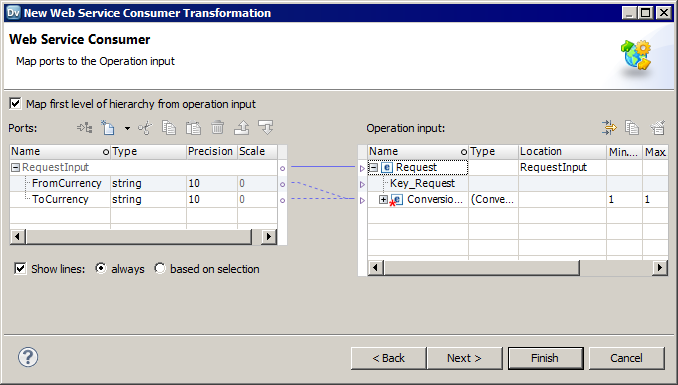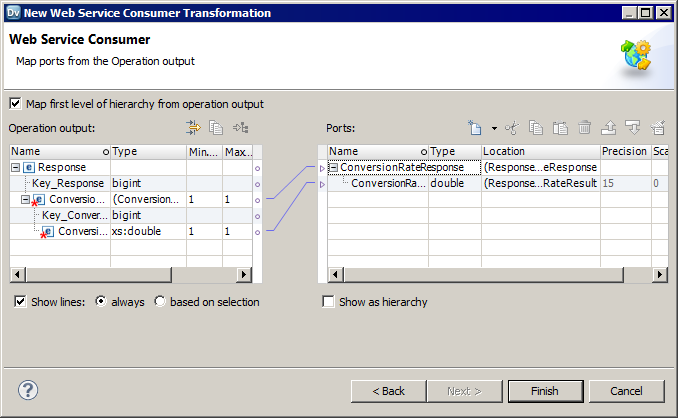Common Content for Data Engineering
- Common Content for Data Engineering 10.2.2
- All Products

Option | Description |
|---|---|
Reusable | Select a project or folder in the
Object Explorer view. Click
. Select the Web Service Consumer transformation and click
Next .
|
Non-reusable | In a mapping or mapplet, drag a Web Service Consumer transformation from the Transformation pallette to the editor.
|

